By Dan Weisz
I planted a Passion Vine plant a few years ago as it is the host plant for Gulf Fritillaries. That means that this species of butterflies likes to lay their eggs on the Passion Vine because the plant meets the dietary requirements of that particular butterfly. By planting Passion Vine, I was able to magically attract this butterfly. Although this spring was a very dry season, once the rains began the butterflies descended on the plant and began laying eggs. Once the eggs hatch, the caterpillar (larva) emerges and begins to consume the host plant. As much of the plant is eaten, the caterpillars converge on any remaining portion of the plant. Here, this group of caterpillars is munching on what would have been a flower.
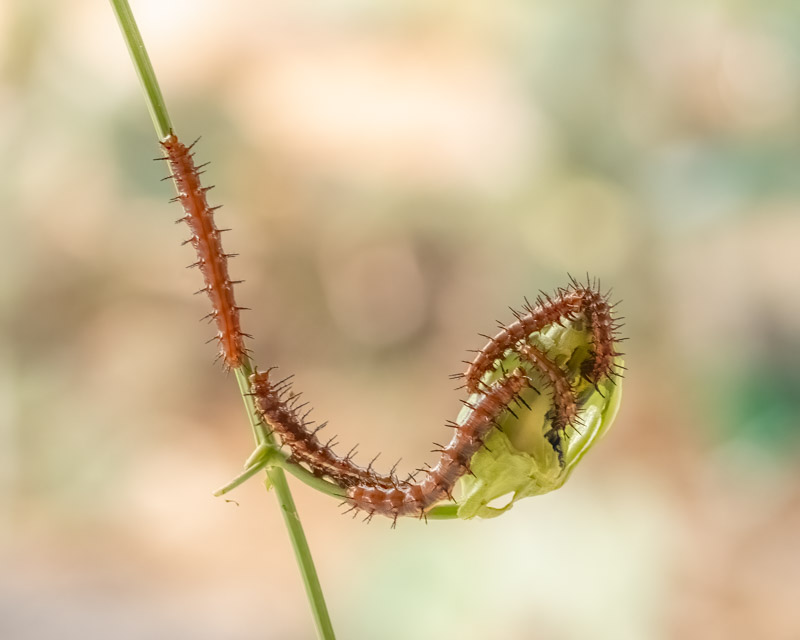
After 2-3 weeks, the caterpillar has grown enough and is ready to begin the next stage in its life- the pupal or Chrysalis stage. Here one caterpillar has attached itself to a portion of the plant and has begun turning into the chrysalis. It is in the “J” position.
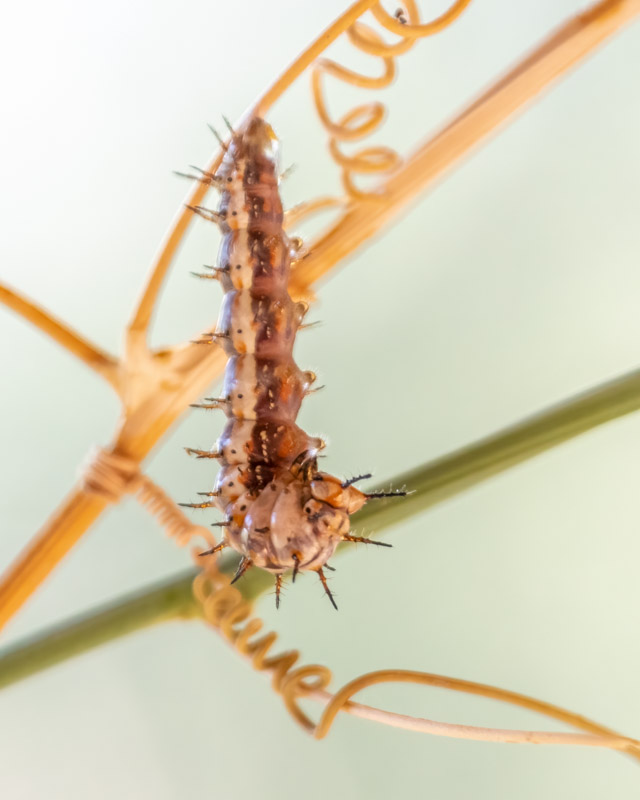
For contrast, here is another caterpillar walking on a chrysalis in search of food.
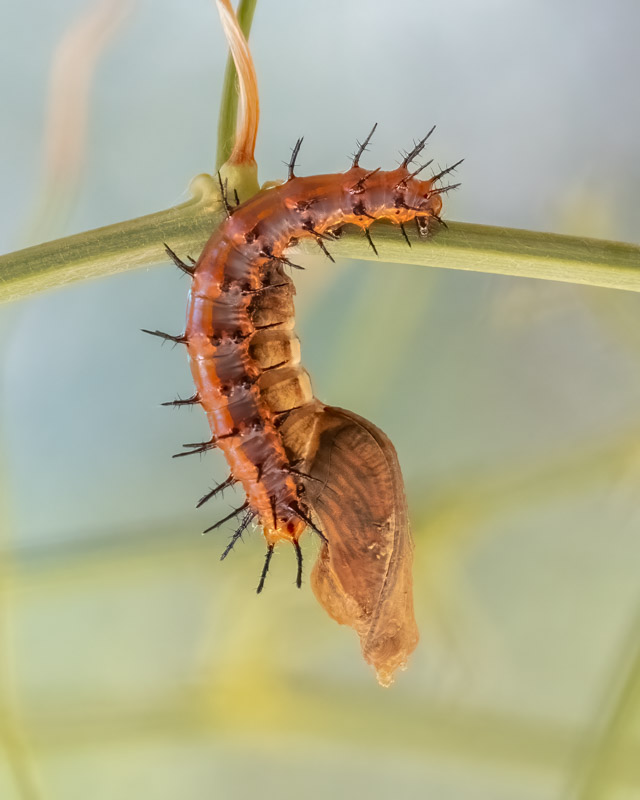
To get a sense of the process, look at how my once lush vine looked after the countless numbers of caterpillars have finished their jobs! If you look closely, you may find a few chrysalis nestled among the green vines and dead leaves.
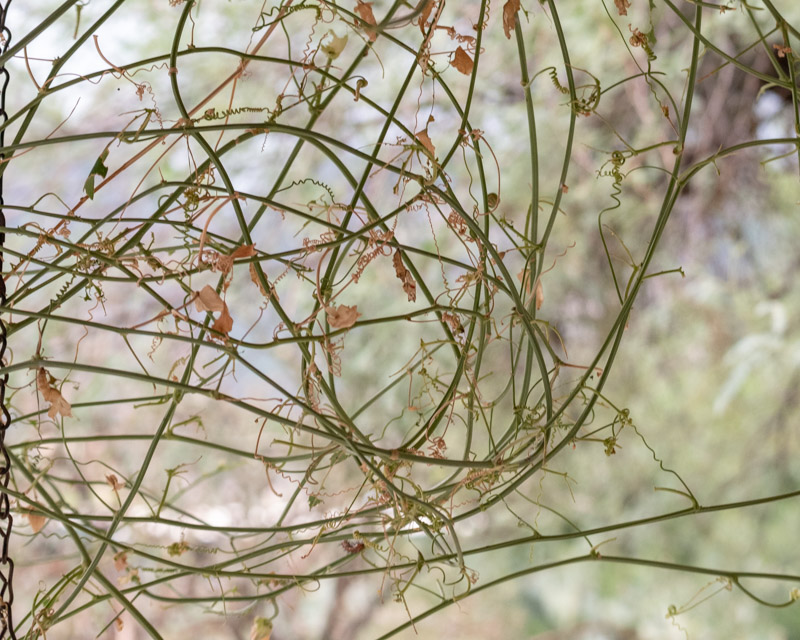
I was surprised to see that many caterpillars traveled far to find the “right” place to form a chrysalis. Here, two have latched onto a nearby hummingbird feeder. The chrysalis on the left is fully formed and on the right, a caterpillar is in the process of forming a chrysalis.
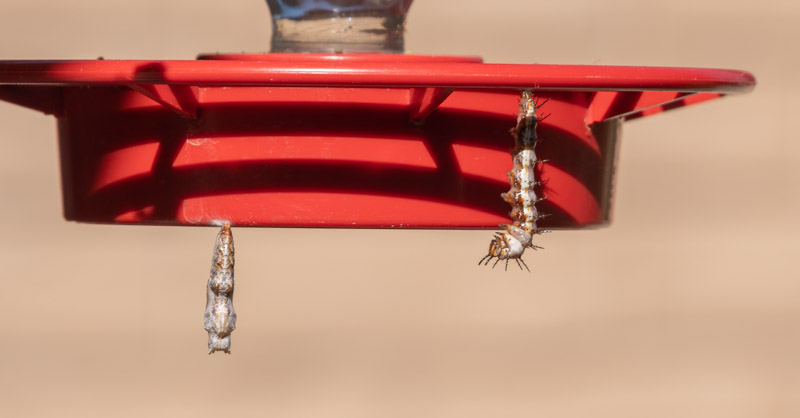
Another caterpillar walked all the way across my porch to attach itself to a patio table. In this photo, the butterfly has just emerged. It may take between 5 and 10 days for this change to occur within the chrysalis. Once the butterfly emerges, it takes a while for its body to adjust, for the wings to dry and harden and for a few other things to happen before it is ready to fly off and begin the serious business of adult life. The butterfly has just a few weeks to mate and help further the species, if it lives long enough!
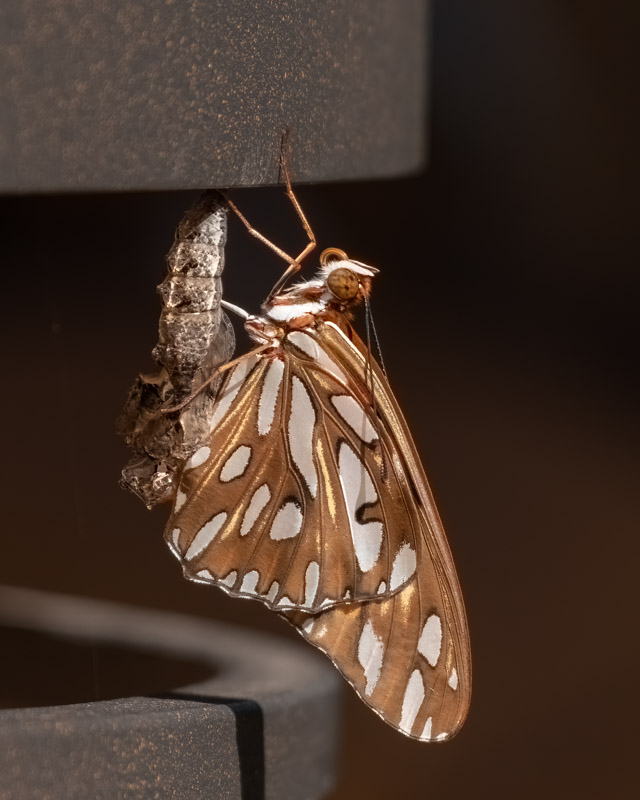
I found two pairs of Gulf Fritillary in courtship interaction right at a chrysalis. Because I saw two pairs like this at the same time, I imagine it is not uncommon for an emerging butterfly to begin this process that soon in their life-cycle. The males are always in search of a female and I assume the freshly emerged butterfly is a female who was sitting in one spot and discovered by a wandering male.
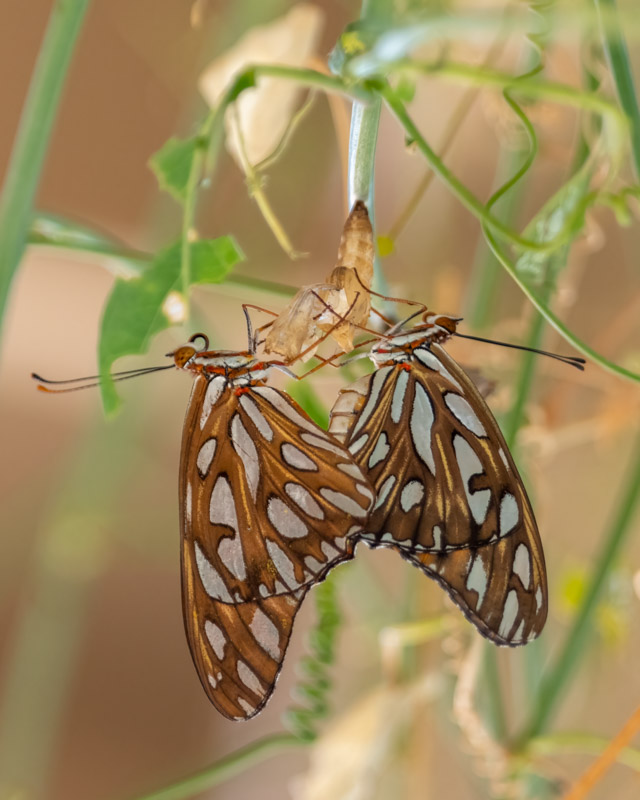
Here is the same pair in a photo taken from the other side. This one has the blue sky in the background. The photo above has my house in the background. By the way, the ‘inside’ of the butterflies’ wings are a bright orange. The underside has this silver and brownish pattern that you can see.
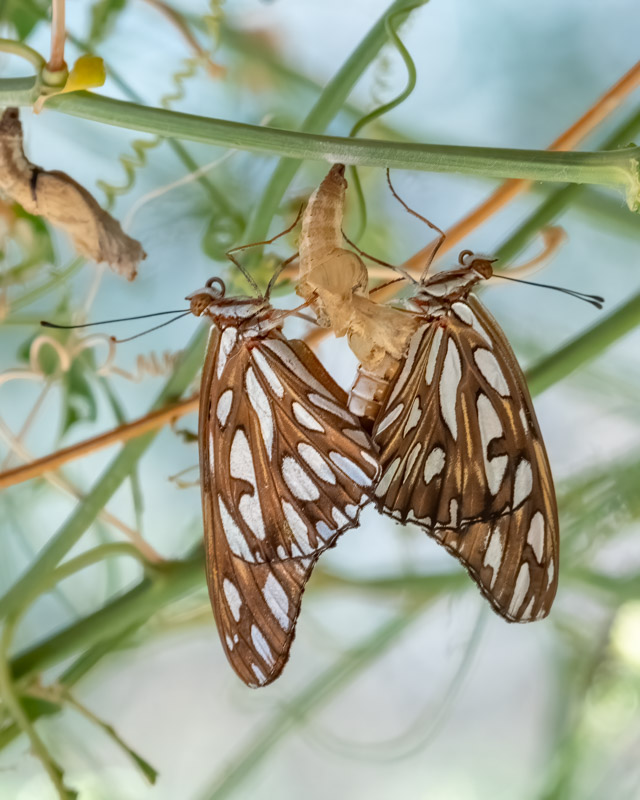
This butterfly emerged within inches of another butterfly who also was on its chrysalis and newly emerged. The photo shows some very interesting things. For one, you can see the golden drop of liquid at the end of the butterfly’s wing. When a butterfly emerges from its chrysalis, its wings are small and wet. The butterfly must pump fluids from its abdomen through the veins in its wings, causing the wings to expand to their full size. However, you can also see that the wings appear damaged near the ends. Whether this occurred during emergence or inside the chrysalis, I can’t be certain. It makes me wonder how many chrysalis are successful at becoming a butterfly, between damage from predators, genetics or other factors.
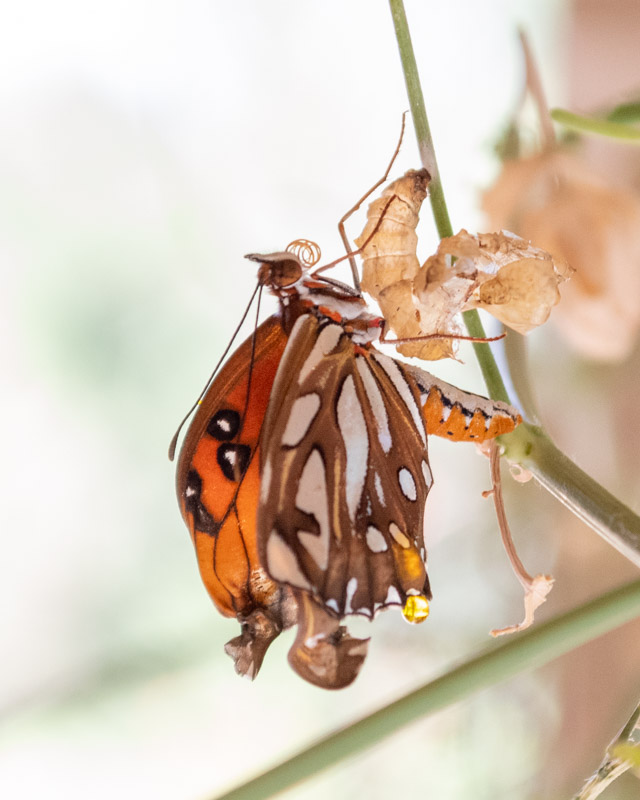
This is a close-up of the same butterfly. Its tongue looks strange but this is normal. When a butterfly first emerges from its chrysalis, its proboscis (tongue) is not fully developed. It is actually split in two. The butterfly must curl and uncurl its proboscis repeatedly until it fuses or zips the two sides together. Amazing!! Also, along with the malformed wings, this butterfly only appeared to have four legs rather than six. In this photo, you can see that one of those four legs seems to be broken off. I read that only 1 or 2 eggs out of 100 grow to be an adult butterfly. Those are tough odds.
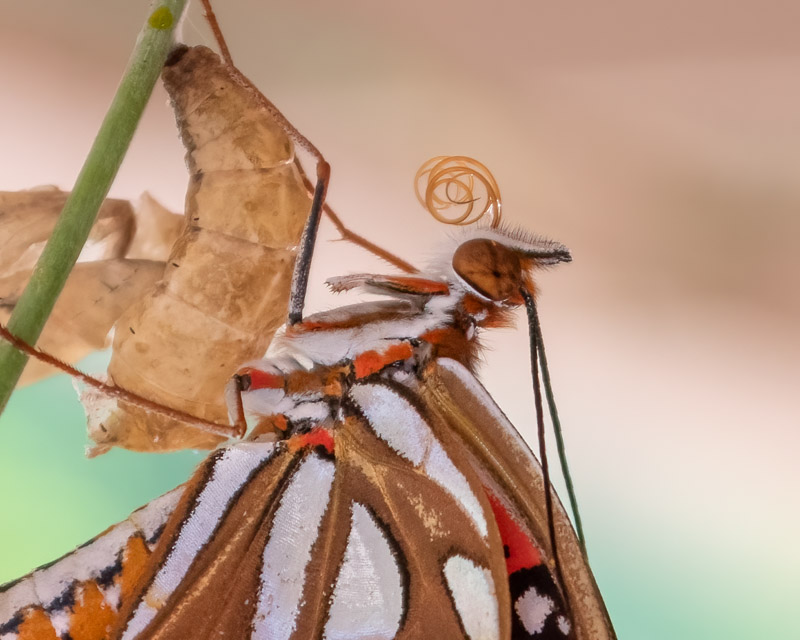
Here is a close-up of the underside of the wing of a Gulf Fritillary butterfly that has emerged and not yet flown.
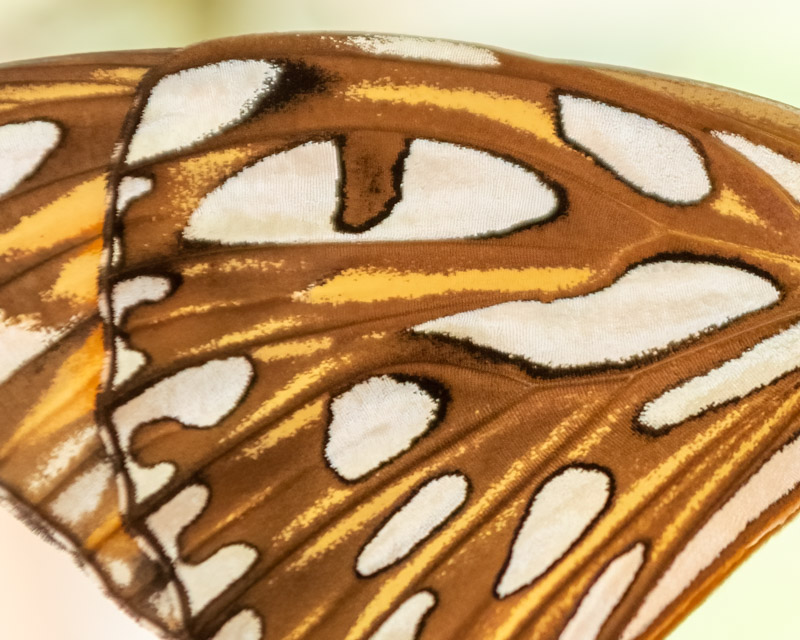
And one more close-up: This time of a ‘healthy’ butterfly just about ready to fly.
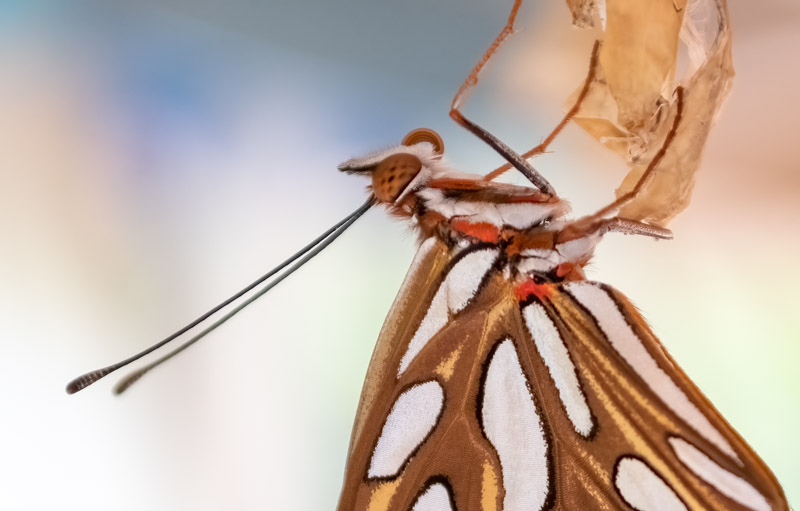
It was fascinating to be able to witness this cycle of life so closely. Now, I will wait for several weeks or so for the Passion Vine to grow new leaves and perchance one more cycle of butterflies before the season ends. (I wondered about the percentage of “eggs” that make it to the adult butterfly stage. I found an answer here:
